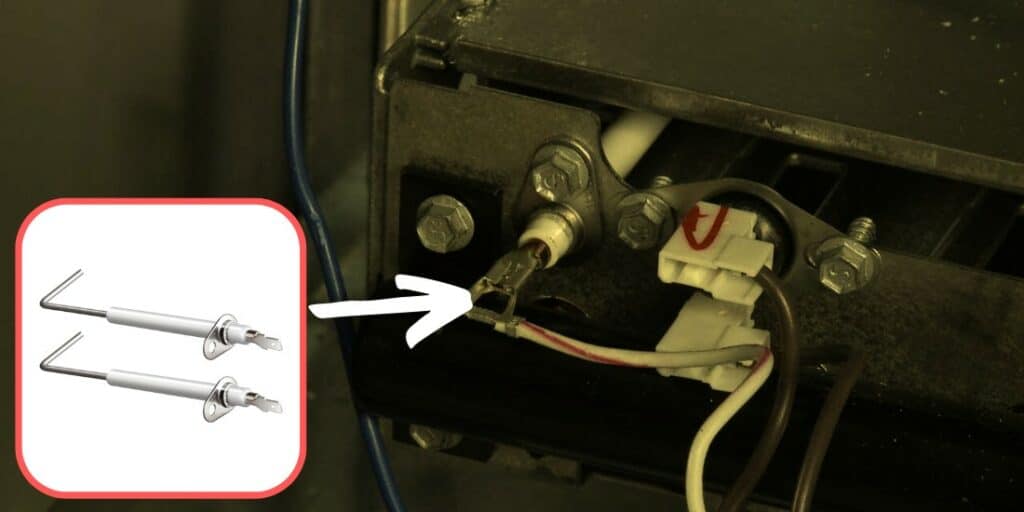Welcome to the world of home heating, where the difference between a cozy evening and a chilly one can hinge on a tiny but mighty piece of your furnace – the flame sensor. As a seasoned HVAC technician, I’ve ventured into many homes, toolkit in hand, on a mission to ensure warmth through the coldest of seasons. Today, I’m here to guide you on a quest that even the least tech-savvy can undertake: cleaning the flame sensor on your Lennox furnace.
Now, you might be asking yourself, “Why should I, a humble denizen of my own abode, delve into the innards of my furnace?”
The answer is simple. Your furnace’s flame sensor is like the guardian of your home’s comfort, diligently confirming that flames are indeed flickering away as they should when your furnace is on. But, like any guardian, it can get worn down, covered in the inevitable buildup of household debris. A clean flame sensor not only ensures the safe operation of your furnace but also keeps it running efficiently, saving you from unexpected cold snaps and potentially costly repairs.
So, let’s roll up those sleeves and embark on this essential bit of furnace maintenance together. Follow my lead, and you’ll not only keep your Lennox furnace in top-notch condition but also gain a greater understanding of how your home heating works.
Let’s get started!
Step-by-Step Guide to Cleaning the Flame Sensor in a Lennox Furnace
Cleaning the flame sensor in your Lennox furnace is a straightforward task that can greatly improve the performance of your heating system.
Before you embark on this cleaning quest, let’s talk gear. You’ll need a 1/4-inch nut driver, some fine-grit sandpaper, a clean cloth, and maybe a touch of bravery. Safety is your sidekick here – turn off the power to your furnace at the breaker box to prevent an unwanted jolt of adventure.
Here’s a simple, step-by-step guide to getting that flame sensor spick-and-span:
Step 1: Power Down
Safety first, my friend. Head over to your circuit breaker box and find the switch labeled for your Lennox furnace. Give it a firm flip to the “Off” position to cut all power to the unit. You’re not playing the hero in a shock-and-awe action flick, so no live wires, please.
Step 2: Access the Furnace Cabinet
March back to your furnace and find the access panel. It’s usually front and center, like the entrance to a cave of wonders. Lift that panel straight up to wiggle the tabs free from the furnace cabinet’s loving embrace. Put it aside so it won’t trip anyone. For those Lennox models that prefer screws, unscrew the guardians on the sides and gently remove the panel.
Step 3: Locate the Flame Sensor
Now, look to the left side of the burner assembly for a thin, metallic stick figure – that’s your flame sensor. It’s held down by a trusty screw. Unscrew it with all the care of defusing a bomb. The screw, not the sensor, is all you need to remove here.

Step 4: Clean the Flame Sensor
Take your steel wool and introduce it to the flame sensor. They’re going to get very familiar. Scrub gently but firmly, like you’re trying to get a stain out of your favorite shirt. The goal is to remove the accumulated gunk of yesteryear without damaging the sensor. Once you’re done, give it a tender wipe with a clean tissue to catch any lingering debris. It’s like a spa treatment for your furnace.
Step 5: Put it All Back Together
Now that the sensor is shiny and clean, it’s time to reverse your steps. Place the sensor back in position, secure it with the screw (don’t get power-hungry, snug is enough), and replace the access panel. Make sure it looks just like it did before you started – no panel gaps or loose screws.
Step 6: Power Up
With everything back in place, you can now restore power to the beast. Walk back to your circuit breaker and flip the Lennox furnace switch back to “On.” It’s the moment of truth.
And there you have it – you’ve just given your furnace a new lease on life, at least as far as the flame sensor is concerned. Fire it up and bask in the glory of a job well done, not to mention the actual warmth your furnace is now happily pumping out.
If it’s still not right, then it’s time for a pro. There is no shame in that game – furnaces can be finicky beasts.
What is a Furnace Flame Sensor?
It’s a small, unassuming rod, usually made of metal, sitting stoically near your furnace’s burner assembly. But don’t let its size fool you; this little component packs a vital punch.
Ever wonder what keeps your furnace from turning into a pyrotechnics show? Enter the flame sensor, a critical safety component that might be more important than you think.
The flame sensor’s job is to play the lookout for flames. When your furnace gobbles up gas and attempts to light it, the flame sensor confirms there’s actually a fire in the combustion chamber, like a lifeguard on duty. Once it senses the flame, it’s all systems go – it tells the furnace’s control board, “We’ve got fire!” prompting the control board to keep the gas valve open.
That’s when the magic happens – the igniter heats up, the gas ignites, and voila, you’ve got warmth.
What Causes a Flame Sensor to Get Dirty?
One of the most common reasons for a dirty flame sensor is the inevitable buildup of airborne villains like dirt, dust, and debris. Think about it – your furnace breathes air in, heats it up, and sends it out to keep you cozy. During that process, it’s also pulling in all the tiny particles floating around in your home.
But it gets more interesting. If your heat exchanger has a crack, it’s like having a broken shield – it can’t protect your furnace’s innards from the onslaught of combustion gases and the occasional stray spark. These escapees can fly out and stick to your flame sensor, leaving it as sooty as a chimney sweep’s broom.
The takeaway? Keeping that flame sensor clean isn’t just about furnace hygiene – it’s about safety and warmth, two things you definitely don’t want to gamble in the dead of winter. So next time your Lennox furnace gives you the cold shoulder, tip your hat to the flame sensor – it might just need a good cleaning.
To keep this from being a seasonal saga, regular cleaning is key. Once a year should do the trick; align it with the first whispers of autumn. Regular HVAC check-ups are like check-ups for your home – prevention is better than cure.
A clean flame sensor keeps the fire burning and the chills at bay. Remember, a little maintenance can go a long way toward ensuring your Lennox furnace runs efficiently and safely all year round. Keep up with it, and it’ll keep up with you.






